Olmsted County Finalizes 10-Year Solid Waste Management Plan
The approved 2022-2032 Solid Waste Management Plan will serve as a roadmap to capture value from waste produced by the community. It enhances existing programs and paves the way toward a more sustainable future by implementing strategies that will achieve positive environmental, social, and economic outcomes.
The environmental strategies focus on maximizing recoverable resources through the construction of a Materials Recovery Facility (MRF), new organics management programs, and programs to minimize construction and other waste through reuse.
Social strategies include expanding waste and recycling education and stakeholder engagement.
Economic strategies involve continuing to fund the solid waste management programs through an enterprise fund, analyzing and prioritizing large capital projects, and making data-supported decisions.
"We are looking forward to collaborating with our partners to implement this plan. We challenge the community to join us in minimizing waste, using waste as a resource, recycling, composting, and properly disposing of waste. Together, we will attain a safe, healthy, sustainable community,” said Olmsted County Director of Environmental Resources Tony Hill.
Olmsted County has been investing in its environmentally protective waste management system for over 35 years. The current system consists of waste and recycling education, toxicity reduction through the Olmsted County Hazardous Waste Facility, a yard waste composting site, the Recycling Center Plus, the Waste-to-Energy Facility, and the Kalmar Landfill.
“We have a solid foundation on which to grow the solid waste management system to support the county’s needs. A very special thank you goes to the current Olmsted County Board of Commissioners for their support in the development of the current solid waste management programs and their vision for the future,” said Olmsted County Deputy Administrator Pete Giesen.
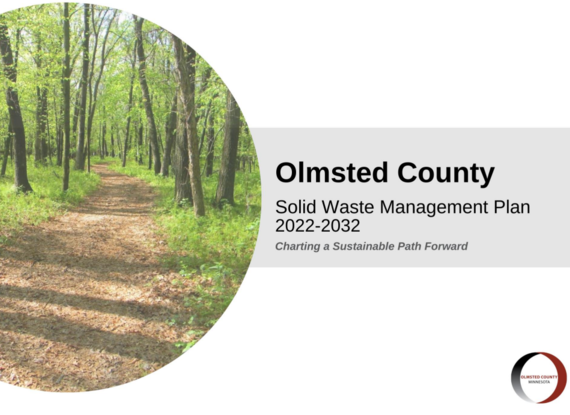
Olmsted County Raises Per Ton Garbage Disposal Fee $1.00
Recent changes to the Olmsted County Solid Waste Management Ordinance will include a 4-tiered licensing system based on the types of waste hauled and services provided as follows:
- Class A - Providing a full array of solid waste collection services
- Class B - Providing source-separated organic material collection services
- Class C - Providing roll-off and compactor box solid waste collection services
- Class D - Providing bulky waste collection and cleanup services that includes the collection and transportation of solid waste as part of the clean-up service.
The number of haulers’ licenses will also increase from the current seven to twelve.
“These changes will provide more hauler competition and more choices for residents and businesses” said Tony Hill, Director of Environmental Resources.
Additionally, the changes include a $1.00/ton increase to the disposal fee at the Olmsted Waste-to-Energy Facility and Kalmar Landfill. Since no property tax dollars are used to fund the Olmsted County integrated solid waste management system, this increase will cover the additional costs required to administer the changes and provide additional educational resources to the haulers. The net result of this change to the average homeowner will be approximately $1.00 per year on the average garbage bill. The per ton fee charged for disposal at Olmsted County facilities has not increased since 2013. The system is primarily funded by disposal fees and energy sales from the Olmsted Waste-to-Energy Facility. These changes will be effective January 1, 2023. A list of licensed haulers licensed for 2023 will be updated by January 4, 2023.
The Solid Waste Management Ordinance can be accessed online.
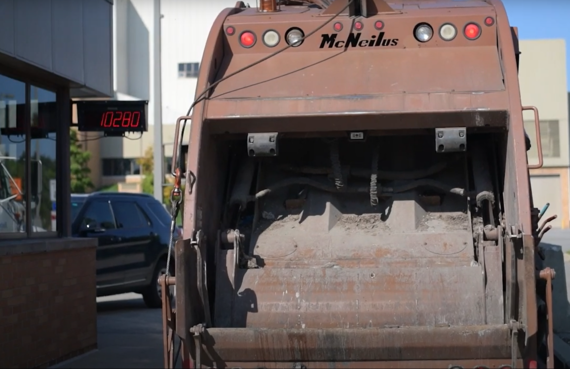 A garbage truck stops at the OWEF Scale House to weigh in; photo credit: Nick Ryan
Resolve to Recycle Loosely!
Are you looking for a New Year's resolution you can keep all year along? Resolve to recycle right in 2023 by recycling your items loosely! The facilities that sort recyclables collected at the curb—known as materials recovery facilities (MRFs)—can't separate items into appropriate categories if they are stuck inside bags.
A detailed list of items that should and should not go in your curbside recycling cart can be found on our website. Garbage should always be bagged.
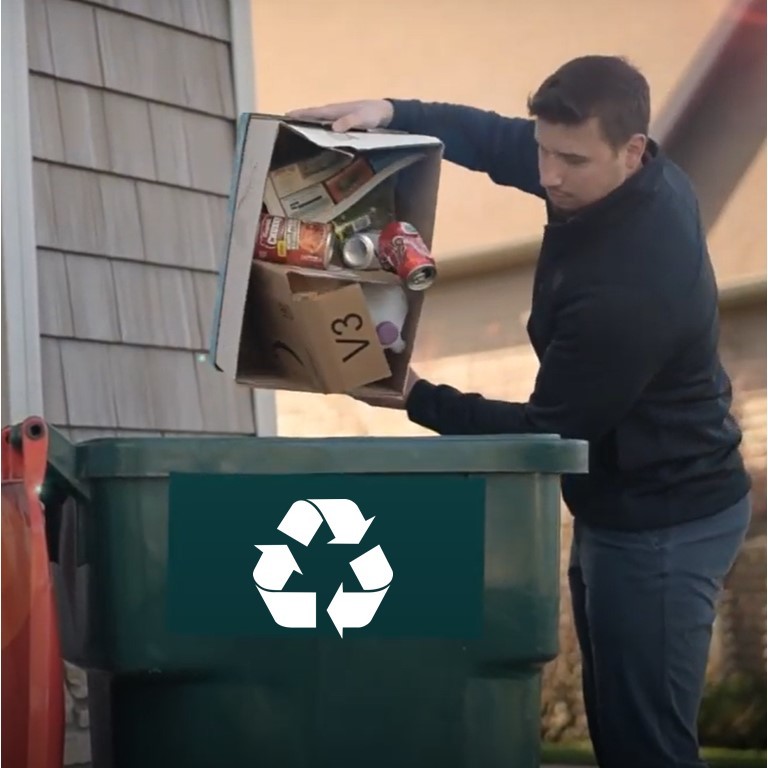 A resident dumps recyclable items in a curbside cart; photo credit: Nick Ryan
Materials Recovery Facility (MRF) Update
Our MRF project looked strong in the biennial capital investment or “bonding” bill; however, no agreement was reached before the legislature adjourned. Early this year, the legislature adjourned the 2022 session without reaching the necessary agreements to effectuate that budget framework and state bonding projects.
With the election over, meetings regarding policy and budget priorities were set to begin in earnest following Minnesota Management and Budget’s (MMB) release of the budget forecast for the week of December 5. In February, MMB projected a record-breaking $9.3 billion budget surplus, and—with the vast majority of those funds going unallocated during the 2022 legislative session and recent reports of tax receipts exceeding expectations—many capitol insiders anticipate a projected forecast approaching $12 billion. Efforts will be made in 2023 to seek state assistance for our MRF Project. The County Board allocated funding to start design and engineering for the project in 2023.
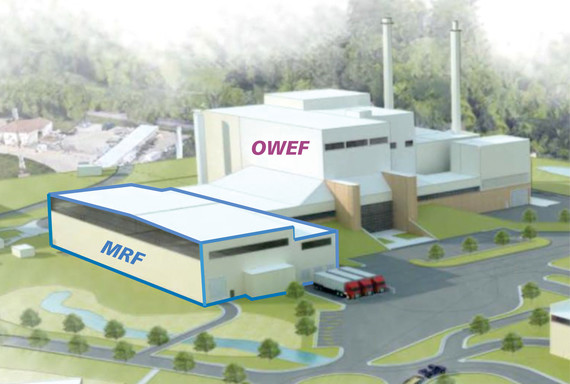 A rendering of the proposed MRF connected to the Olmsted Waste-to-Energy Facility via RRT Design & Construction
Disposal Discussion - Christmas Trees
Through March, Christmas trees can be dropped off at the Olmsted County Compost Site any day of the week during daylight hours. There is no disposal fee. Stands, ornaments, and lights should be removed.
Wreaths, swags, boughs, and other evergreen decorations should be placed in a bag and thrown in your garbage to prevent the spread of an invasive species known as the Elongate Hemlock Scale—a pest that feeds on conifer trees. Do not compost.
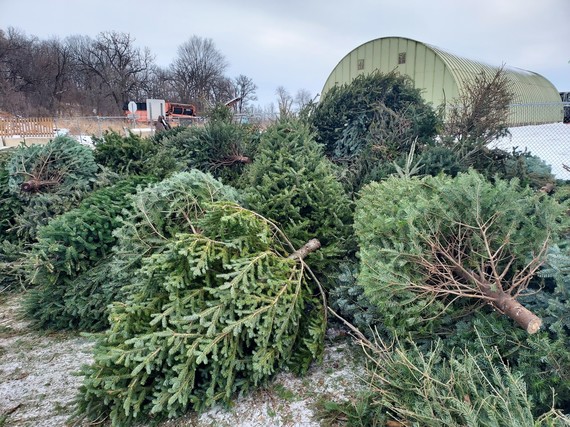 Christmas trees at the Olmsted County Compost Site; photo credit: Anthony Wittmer
|